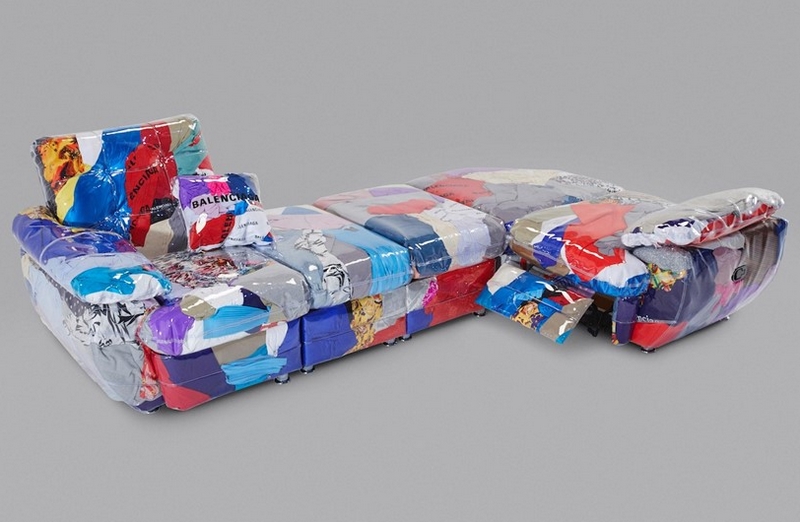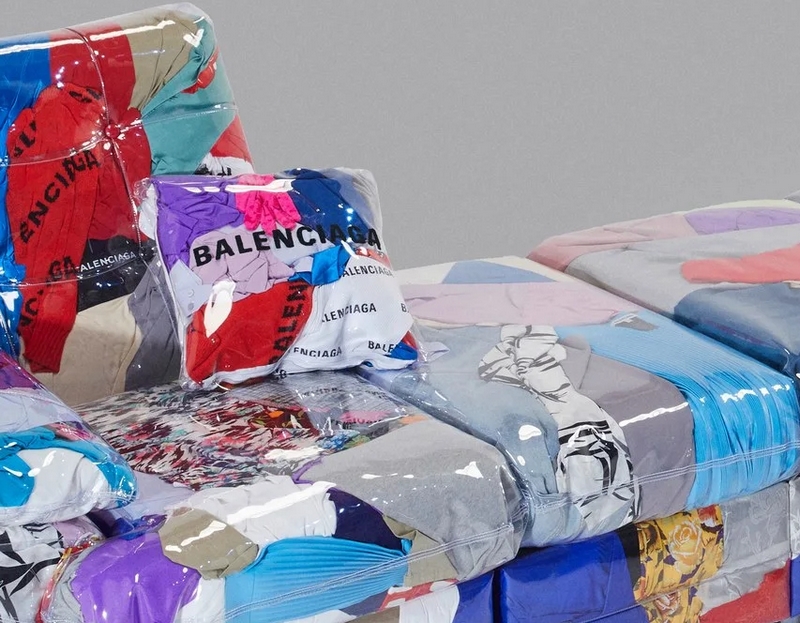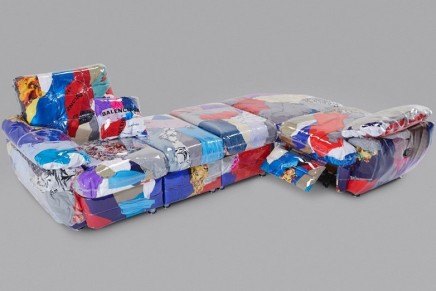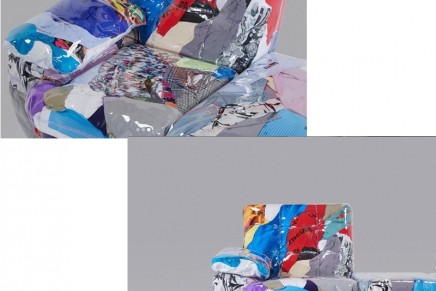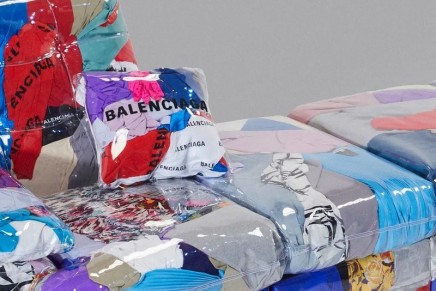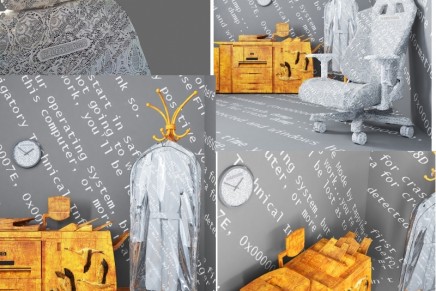Balenciaga x Harry Nuriev create a functional sofa using discarded Balenciaga clothing.
For Design Miami 2019 (December 3-8), Balenciaga has collaborated with artist, architect, and furniture designer Harry Nuriev to advocate for environmental accountability by creating a functional artwork using discarded Balenciaga clothing. The collaboration between Balenciaga and Nuriev reimagines a sofa—the center of so many homes—as an example of environmentally conscious design, giving generations of garments and other materials another life. The oblong sofa—inspired by typical overstuffed recliners—is upholstered with damaged or otherwise unsellable garments and off-cuts from obsolete stocks of Balenciaga clothing, encased by scrapped transparent vinyl. Patterns, cuts, and tags within the stuffing are recognizably Balenciaga, a mix of past seasons and ideas.
An advocate for environmental issues himself, Nuriev saw Balenciaga as a natural partner. “When I met Balenciaga’s creative team, I proposed collaborating on an art object centred around sustainability and was excited to learn about Balenciaga’s mission to upcycle waste,” Nuriev told dazeddigital.com. “They told me they had unused, damaged clothing and garment off-cuts from the Balenciaga warehouse, and then everything developed organically from there.”
“I’ve always been fascinated by Balenciaga’s ability to incorporate subversive designs within the house’s framework of signature looks. I have a similar aesthetic approach, with an aim to elevate utilitarian objects to arrive at something thought-provoking,” Nuriev added in the interview.
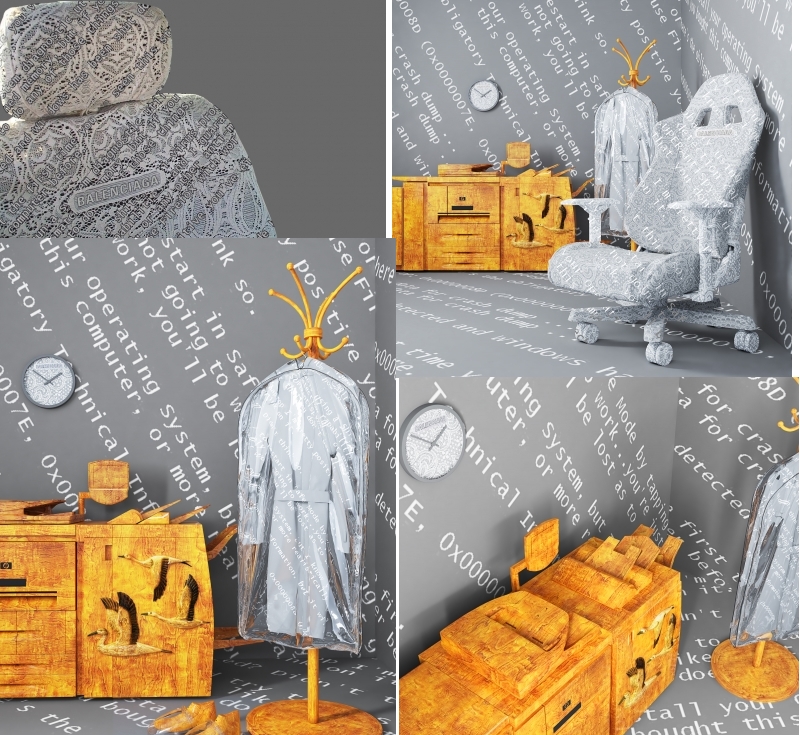
Harry Nuriev Office installation for 2018 design miami/; @Crosby Studios Harry Nuriev
Balenciaga Spring-Summer 2019 fashion show inspired another work by Harry Nuriev.
The Office is based on the very beginning of Harry Nuriev’s career when he was an intern in a small office with no window in a typical Russian office building. This was the space where Nuriev began to create his imaginary world—all the commonplace office furniture and equipment became extraordinary works of art.
In The Office, the chair symbolizes creativity and a place to kill time, sometimes miserably; the printer symbolizes agreements and bureaucracy; the window symbolizes freedom and watching your life rather than living it; the air conditioner symbolizes fresh air and death; the rack symbolizes orderliness and a dress code that can kill your identity; and the shoes symbolize people who are not there anymore.
The overall concept expresses Nuriev’s ideas about connecting fashion, design, and art.
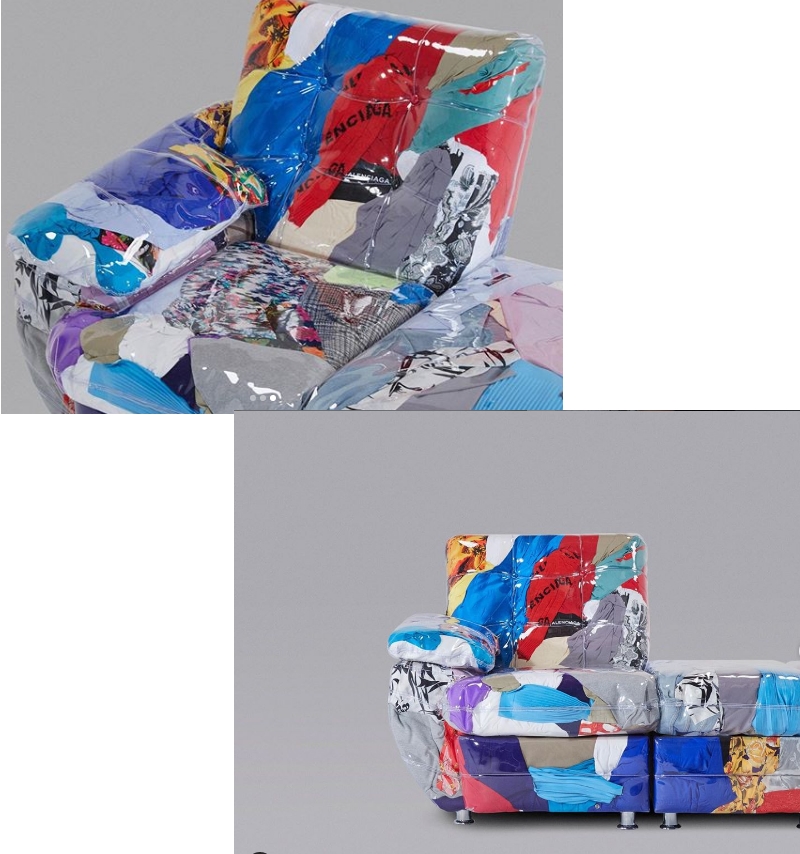
@Balenciaga and @Crosby Studios
Design Miami/ returns to Miami Beach December 3–8 for its fifteenth edition with some notable changes.
The fair will take place for the first time in the recently completed Pride Park, with its entrance now directly facing the entrance to Art Basel Miami Beach. The fair is also opening its doors to the public in new ways: the reconfigured tent has a glass facade at the entrance to house the new Design Forum presented by SCAD, which will be open to the public throughout the week for cultural programming. The discussions taking place in the Design Forum will also be broadcast outside the tent for passersby.
The works shown at Design Miami/ are a reflection of the trends and shifts in the greater design and art marketplace. Outlined below are some of the emerging themes from this year’s Gallery and Curio programs, revealed across methods, materials, historical periods, and overall booth concepts.
“We are thrilled to present this edition of Design Miami/ in the newly completed, 6-acre park, named Pride Park. What once was a parking lot has been transformed into an additional public greenspace next to the Miami Beach Botanical Garden,” says Jennifer Roberts, CEO, Design Miami/.
“With every edition of the fair, we see the range and quality of the pieces continue to grow. From rare, pieces dating back to the 19thcentury, to mid-century special commissions and contemporary pieces debuting at the fair addressing today’s most important societal concerns, presentations themselves are increasingly innovative and engage with our visitors to provide moments of discovery, furthering global interest in collectible design.”

